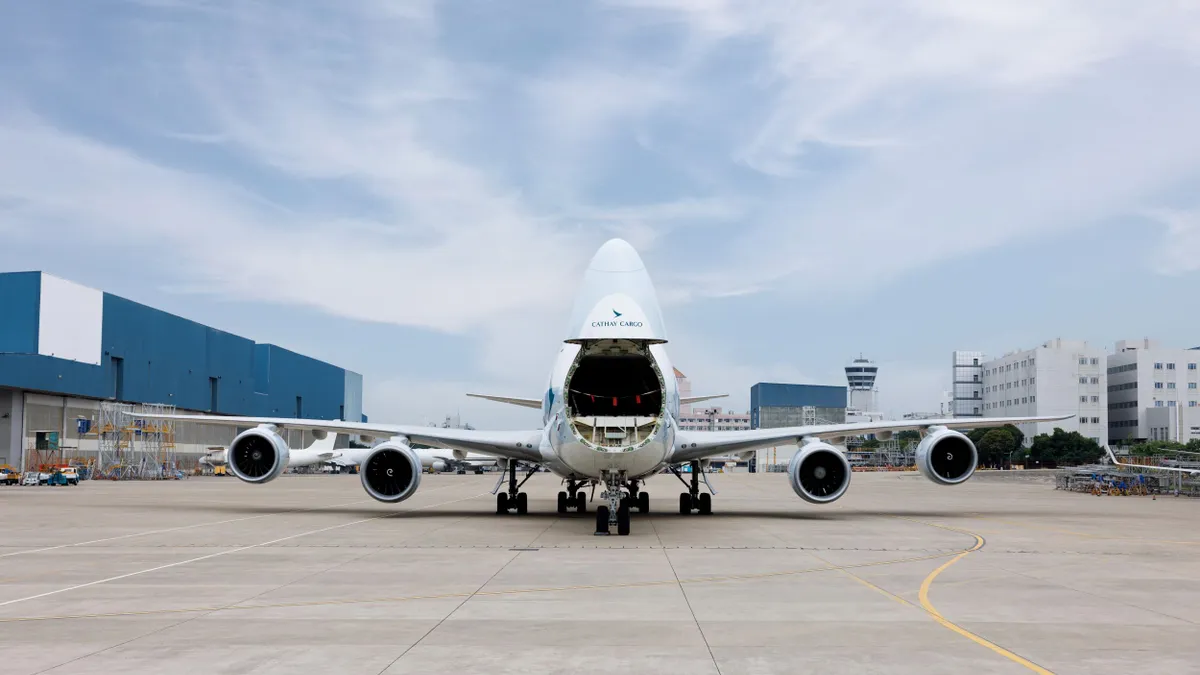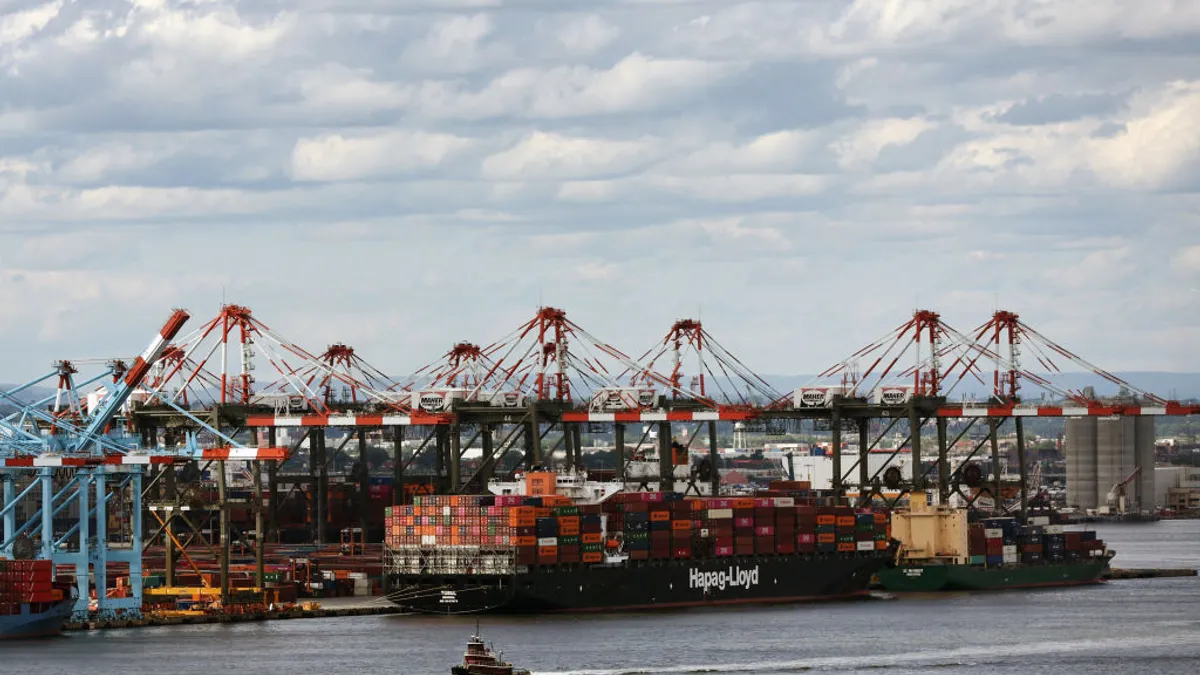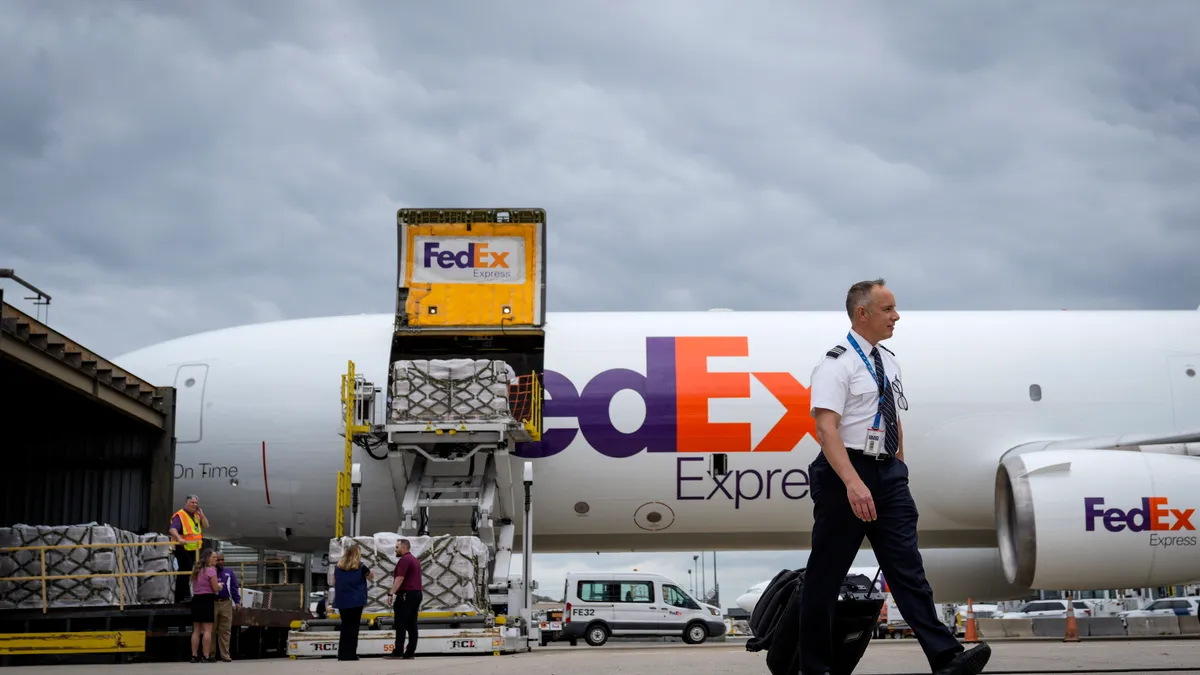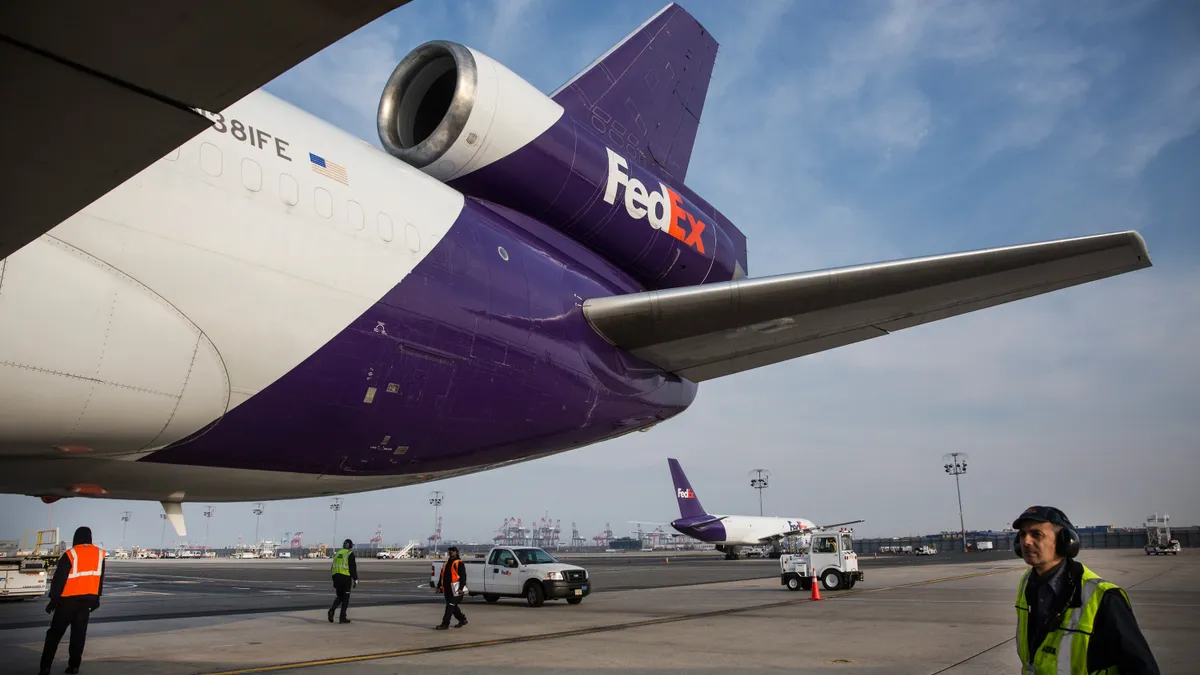It’s really an inoffensive word — externalities — but when it refers to freight transport, it can be quite offensive. The U.N. Conference on Trade and Development (UNCTAD) uses it to describe the external costs that undermine sustainability objectives in freight transport.
Externalities include such issues as congestion, pollution, fossil fuel depletion, infrastructure degradation, Greenhouse Gas emissions (GHG) and noise. It’s imperative that logistics providers take steps to ensure their policies encourage and contribute to sustainability.
"Over the last few years, there has been constant pressure from investors, shareholders, customers and non-profits to push a freight sustainability analysis," Karen Sage, chief marketing officer of Transplace and former CMO of MercuryGate, told Supply Chain Dive via email. "Any company looking to conduct a thoughtful and thorough sustainability analysis must look at the direct impact that their business has on the community, environment or workplace. Such an effort requires both visibility tools and processes to achieve success."
Take it step-by-step
It all starts with establishing a baseline by measuring freight metrics, said Michael Notarangeli, executive vice president of logistics at Maine Pointe, a global supply chain and operations consultancy.
He suggested using the following questions to establish a baseline:
- How many miles are traveled?
- How much traffic by mode?
- If utilizing an internal fleet, what are the maintenance costs?
- What is fleet age by equipment type?
- What retrofitting has taken place?
"Firms should also look to supplier contracts to determine if there [is] any continuous improvement language related to environmental impact, or policy statements about compliance with federal, state or local environmental programs," Notarangeli told Supply Chain Dive via email.
"Over the last few years, there has been constant pressure from investors, shareholders, customers and non-profits to push a freight sustainability analysis."

Karen Sage
Chief Marketing Officer, Transplace
Each company needs to tailor its approach, Sage said. "Various levers that can be addressed include fleet upgrades and modernization, leveraging TMS software to maximize routing, consolidate loads, and timing of delivery. Each company needs to identify the greatest impact areas and what they want to address before developing the steps to achieve them."
Sage added that education is among the most vital levers that companies can use. It’s essential that business and stakeholders are informed as to why change is necessary. Each step of the process, as well as goals and results, are communicated so buy-in doesn’t get lost during execution.
Be practical
UNCTAD’s Sustainable Freight Transport (SFT) Framework provides a tool featuring a collection of more than 300 sustainable freight transport measures, which allows companies to customize them according to a set of criteria. Filters include the mode of transport, timescale for implementation, investment cost and emission savings potential.
The measures can range from the obvious (adoption of energy efficient equipment) to very specific, including aerodynamic drag reduction in railways, automatic tire inflation on tractors/vehicles/trailers, aviation biofuels and aviation fuel taxes, reduced pre-loading time for refrigerated vehicles, retrofitting old equipment in ships with emission reduction devices, roof air deflectors and treatment of wastewater from freight infrastructure of facilities.
Notarangeli suggests a practical approach to establishing, executing and continuously improving such a program, incorporating it into an enterprise dashboard and making the results visible to all stakeholders. His steps include:
- Develop tracking and reporting capabilities (such as dashboards).
- Create internal sustainability policy and programs and communicate them to all stakeholders, including suppliers.
- Work with suppliers to incorporate improvement programs and metrics to be reviewed quarterly.
- Maintain an enterprise awareness of regulatory issues, technology developments, industry best practices and indices, and take an active planning approach for investment and compliance.
- Conduct an annual assessment and determent next-generation initiatives.
More customers require service providers to track compliance and report results. Establishing a program to capture detail on a perpetual basis will make the task much easier. The use of data analytics can help streamline the process, using the company’s business information as a core to work from, Notarangeli added. He pointed out that sustainability programs should have a business case attached to them to ensure resources and funding are being properly applied.
Several global companies have pledged to reduce their carbon footprint. L'Oréal has 70,000 SKUs, which makes for a large and complex supply chain. The company pledged to reduce its overall environmental footprint by 60 percent by 2020, based on a 2005 benchmark.
Steps include improving energy emissions at its factories, distribution centers and offices. The biggest reduction, though, will be from decreasing carbon emissions across its distribution network 25 percent by 2030. Transferring as much volume as possible from air to rail and sea, while using alternative vehicles in cities, is key, L'Oréal said.
Sometimes it’s a by-product
Not every business starts out with a goal of improving the environment, Eric Grice, Project Manager on Transportation Solutions Consulting at enVista, told Supply Chain Dive.
"I find they rarely call about sustainability or a green footprint,” he said. “Most of the time it’s how to improve revenue, [cut] cost or reduce miles, which in turn have an effect on the environment. We might talk with someone for 59 minutes on how to reduce costs then, at the end, they’ll mention a green initiative."
"Are they focused on the budget, or is there a company initiative on the environment? It comes from the top."

Eric Grice
Project Manager on Transportation Solutions Consulting, enVista
Clients discuss network or mode optimization and want to know how it translates to transit times. If miles are reduced and fuel is saved, that’s having an effect on the environment, but "going green" is not a driver or top-of-the-list concern.
"It really comes down to the corporate culture," Grice said. "Are they focused on the budget, or is there a company initiative on the environment? It comes from the top."
Notarangeli said crafting a sustainable supply chain or introducing sustainable practices makes good business sense by focusing on eliminating waste, excess miles and inefficient equipment.
"But it also could unlock new business relationships with companies that are seeking to build a sustainable supply chain, and wish to partner with companies that not only have a program, but publish sustainability information on their webpage or use it in their marketing collateral," he said. "Social and regulatory requirements are strong motivators, but the opportunity for new business is also a powerful motivator."
This story has been updated to reflect Karen Sage's new position.




















